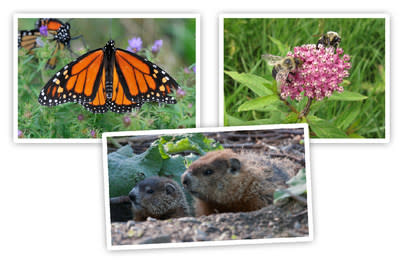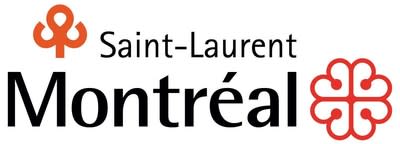SAINT-LAURENT, QC, Dec. 7, 2022 /CNW Telbec/ – At its public meeting on December 6, Saint-Laurent Council adopted a motion to take part in Ville de Montreal’s Pledge to carry out 15 concrete actions for the preservation of species diversity and ecosystems within the United Nations’ COP15 on biodiversity held in Montréal, December 7-19.
With this motion, Saint-Laurent is reiterating its will to reduce threats to biodiversity, to share the benefits of biodiversity and to implement solutions in terms of governance, management and education.
In fact, Saint-Laurent Mayor Alan DeSousa will be speaking on this subject at COP15 on December 8 at the ICLEI-Québec-Montréal pavilion in order to present the biodiversity-related strategies—developed by Saint-Laurent—for governance, planning, education and participation of residents.
Quote
“Since the early 2000s, Saint Laurent has been taking biodiversity into account in all of its decisions and projects, both internally and externally, and has given itself the means to take action. Today, by supporting the pledge made by Montréal and by many other cities around the world at COP15, we are continuing our vital mobilization to protect biodiversity on our territory. As shown by the example of the Saint-Laurent Biodiversity Corridor, we are focusing on a vision, responsible planning, human and financial resources and, above all, on governance involving all stakeholders. As Jacques Cousteau, the famous oceanographer, once said, “We protect what we love, and we love what we know.” So this means raising awareness and educating all the stakeholders on the territory and involving residents, in particular, to achieve tangible objectives. We can and must do even better!”
Alan DeSousa, Mayor of Saint-Laurent
Biodiversity: a sustainable development component at the heart of Saint-Laurent for 20 years!
Saint-Laurent is increasing the number of initiatives aimed not only at protecting biodiversity on its territory, but also at reducing greenhouse gases and adapting to climate change. Several innovative projects have been developed, giving Saint-Laurent a solid reputation as a leader in the field of sustainable development in Québec.
In fact, in 2015, the borough signed an agreement to collaborate with the Secretariat of the Convention on Biological Diversity to promote their common vision on urban biodiversity. This agreement also aimed at exchanging expertise as well as developing joint activities and information tools.
In 2006, a process to restore Parc Marcel-Laurin woodland, in collaboration with the Greater Montreal Ecological Committee, led to its inclusion in a directory of natural environments—the Répertoire des milieux naturels protégés de l’agglomération de Montréal—in 2010.
In addition, Saint-Laurent was the first borough in Montréal to adopt an urban forestry plan in 2009, which included a component to promote biodiversity. As a result, the number of different tree species planted annually has increased from 6 to 58 and the planting of more than 10,000 large trees since 2008 will be celebrated in 2021.
Since 2013, Saint-Laurent has celebrated Biodiversity Day every year to inform its residents and raise their awareness about the importance of protecting urban nature. This begins, in fact, at an early age, which is why Saint-Laurent launched the Mon école écolo program in 2004.
In 2017, Saint-Laurent became the first monarch-friendly borough in Montréal, within the program of the Commission for Environmental Cooperation, involving Canada, the United States and Mexico. In 2019, Saint-Laurent was the first Québec municipality to obtain “Bee Friendly City” certification awarded by the Canadian organization Bee City Canada.
All of these actions contributed to the launch, in 2016, of the Saint-Laurent Biodiversity Corridor project, which was put into concrete form in May 2019 by way of a master development plan following a national multidisciplinary landscape architecture competition. This project, the first phase of which was completed in 2021, is designed to restore ecological connectivity over 450 hectares in area, by linking existing green spaces and natural environments, including Parc Marcel-Laurin woodland, Ruisseau Brook and the Bois-de-Liesse and Bois-de-Saraguay nature parks located along Cavendish and Thimens boulevards.
To protect biodiversity, it is first essential to be familiar with its ecosystems, and particularly, by conducting ecological inventories of natural environments and mapping the results. Saint-Laurent relies mainly on its Division de l`environnement et de la protection du territoire to carry out this type of inventory on a regular basis.
In addition, in order to provide residents with the opportunity to adopt such urban nature as their own, Saint-Laurent makes sure that it is accessible—for example, by creating walking trails in Parc Marcel-Laurin Park woodland, wooded areas in municipal parks or by offering numerous educational activities.
Moreover, environmentally-conscious planning must be put in place to protect existing spaces and also to develop the territory respectfully. In fact, Saint-Laurent’s Administration has distinguished itself through innovative bylaws such as the one prohibiting pesticides or the zoning bylaw that regulates urban development by taking biodiversity and ecological connectivity into consideration. Mention should also be made of the bylaw governing the development of parking spaces to limit their ecological footprint through greening and thereby reduce heat islands. It is therefore by giving itself the human and financial means that Saint-Laurent is able to better protect and develop biodiversity.
This strategy is being pursued in Saint-Laurent’s 2021-2030 Climate emergency plan, adopted a year ago, which aims to protect biodiversity, fight climate change and reduce greenhouse gas emissions.
Related links
About the borough of Saint-Laurent
A city established in 1893, Saint-Laurent became one of Montréal’s 19 boroughs in 2002. Located north of the island of Montréal, Saint-Laurent is the largest borough of all, with its 42.8 square kilometres. Its population of over 100,000 is one of the most multicultural. With the borough having become a “sustainable municipal territory” in 2019, its Administration places sustainable development—and environment protection, in particular—at the heart of all its decisions: a challenge that is all the greater since more than 70% of its territory is devoted to industrial and commercial activities, with over 4500 companies and 110,000 jobs. In fact, it is home to one of Québec’s main industrial and technological hubs. Already boasting great accessibility to the main highways and public transit, Saint-Laurent is getting ready to welcome 5 train stations within the new Réseau express métropolitain (REM) light rail network. And last but not least, with Saint-Laurent’s two libraries, its Centre des loisirs (recreation centre), its modern Complexe sportif, its arena and some 50 parks, a wide range of services are offered in many areas of activity, such as culture, sports and recreation. In this way, Saint-Laurent’s Administration ensures a high quality of life for families living in the borough as well as a stimulating environment for businesses.
SOURCE Ville de Montréal – Arrondissement de Saint-Laurent


View original content to download multimedia: http://www.newswire.ca/en/releases/archive/December2022/07/c1117.html






